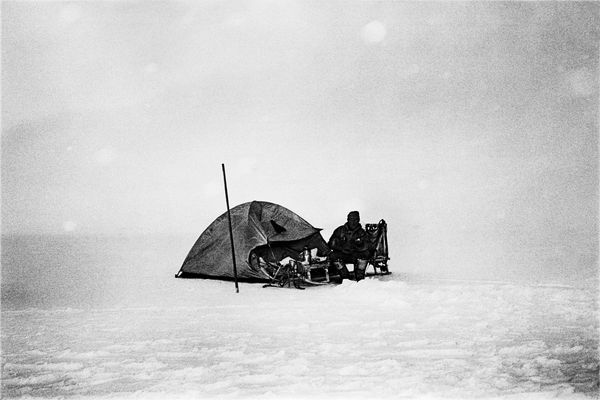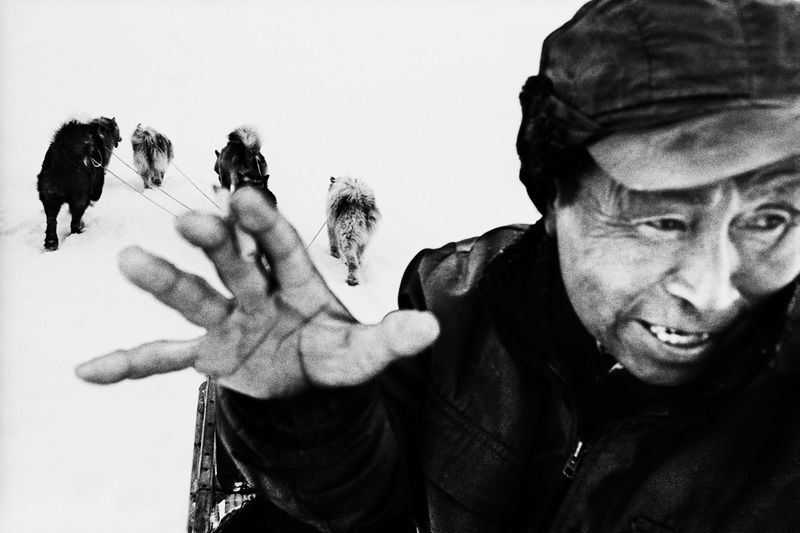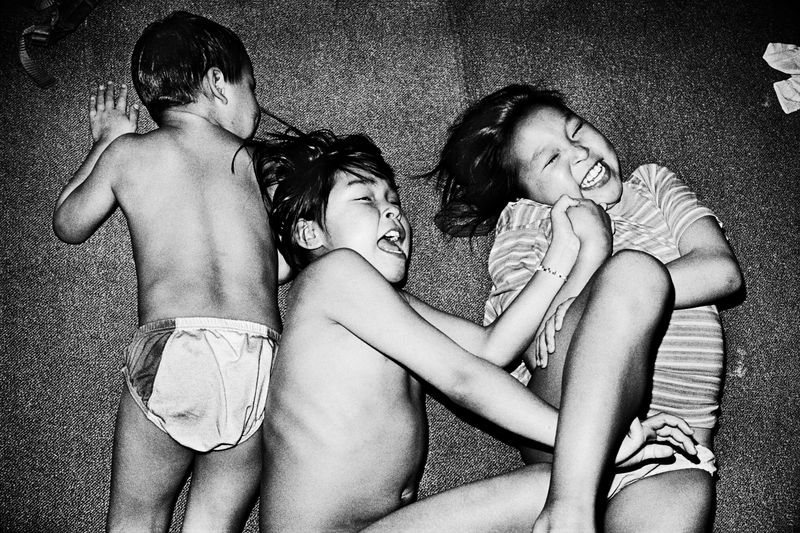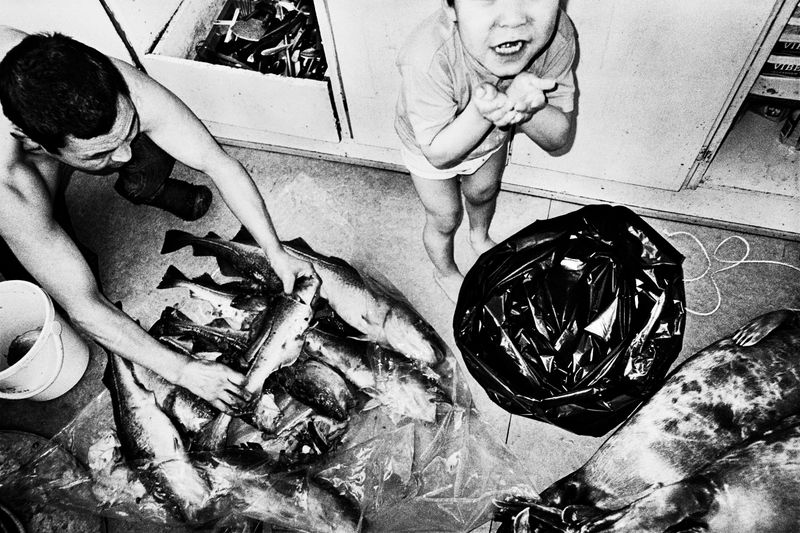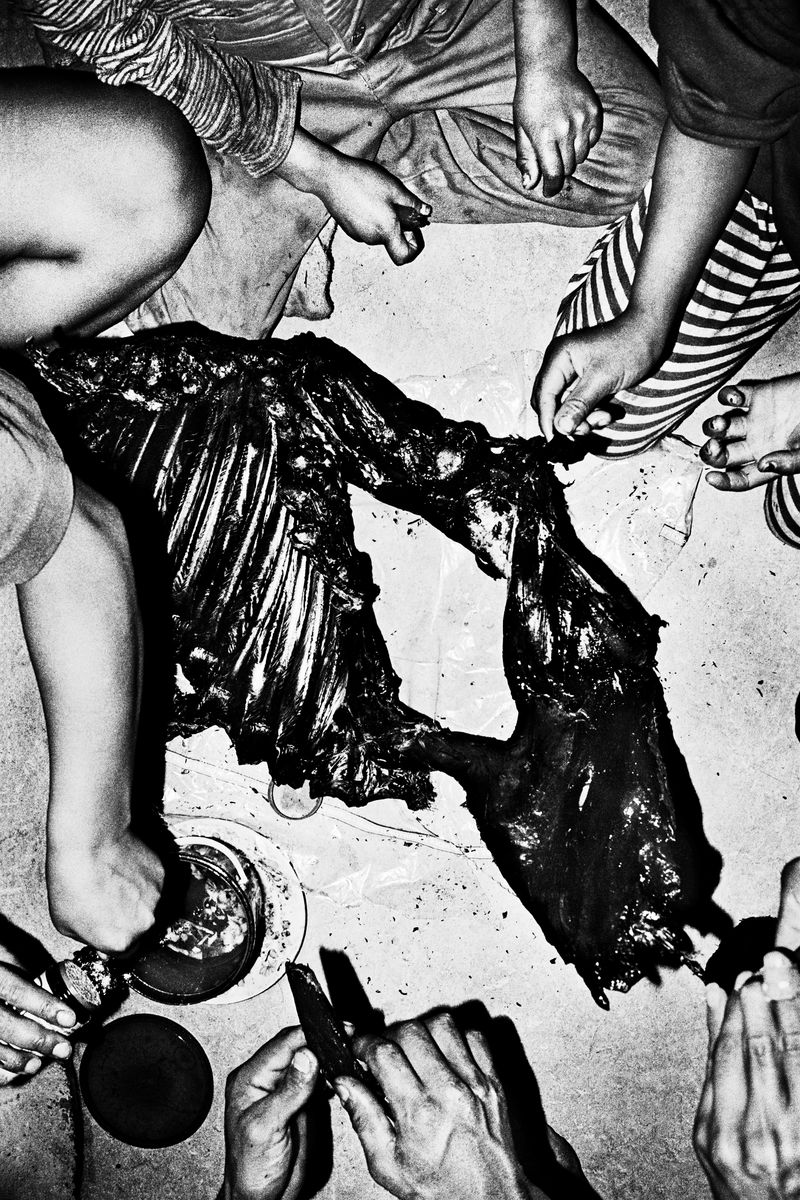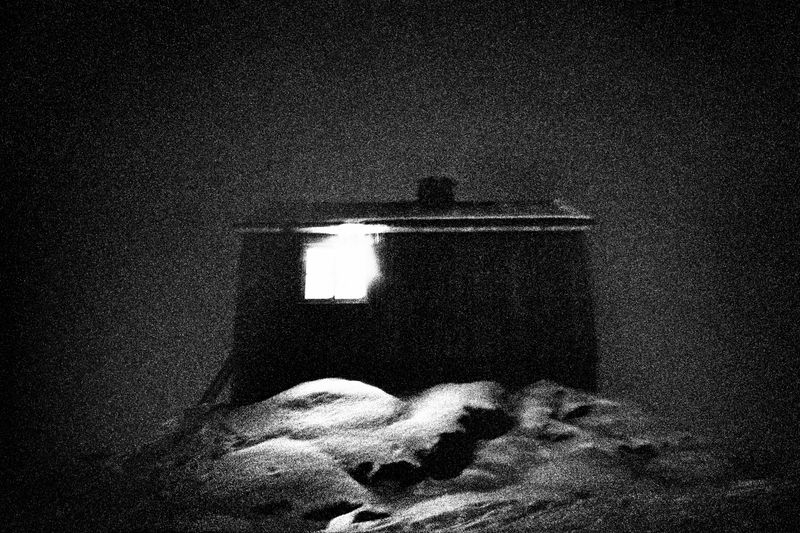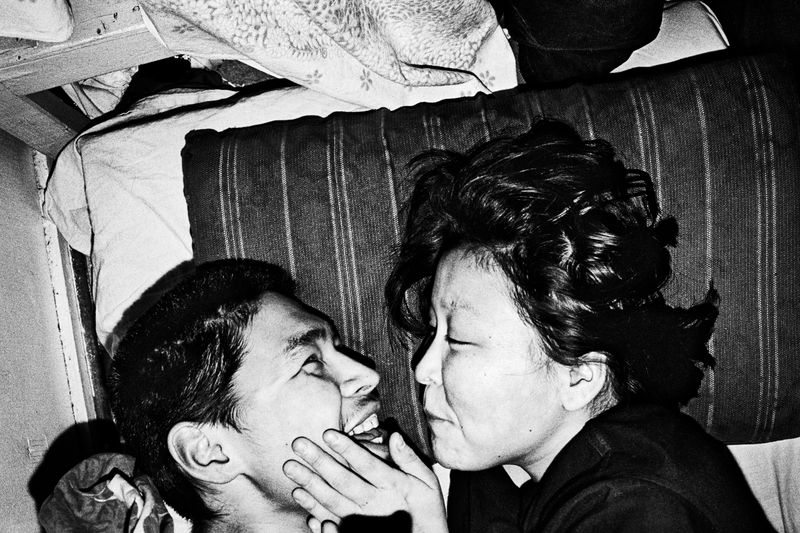In James’ House: Fishing, Family, and Photography
-
Published30 Mar 2023
-
Author
- Topics Photobooks
James House is the continuation of Jacob Aue Sobol’s love affair with Greenland. Where his earlier book, Sabine documented his love affair with Sabine, a Greenlandic woman, James House details his love affair with Greenland itself.
Three spreads in there’s a full bleed double page spread of a bunch of fish parked by the hole in the ice they were caught from. It’s dark, it’s grainy, and the fish look like prehistoric creatures hauled from the bottom of the sea from another time. The ice-hole is black, a gateway into another world, a world which is hostile to the human presence.
Go forward a few pages and we see more fish, a dead seal, and then a picture of James of the title, sitting on his sled as the dogs pull him along. It’s not just the sea that is another world here. It’s the entire landscape. The other time is now, and contrary to any beliefs we may hold, we are part of it, our own prehistoric time.
That fragility of life, the precariousness of nature and trying to exist in a landscape that can kill you in minutes if you do not respect it, if you are not prepared, in a community that has experienced devastating economic, demographic, and environmental change over the last 100 years, is what strikes you first about James House.
What comes next is the reason there are still people living in Greenland, still living in the small community of around 100 people (James no longer lives there since his wife passed away) that call Tiniteqilaaq in Eastern Greenland home. We see the two children sitting by the window of the house of the title. The window is open, there’s an ashtray full of cigarette butts to one side, and the idea is they are waiting for their grandfather, James to return.
Return he does; with the fish, with the seal, with life, with soul. The seal gets butchered, the fish gets cleaned, there’s a party in the house. The children jump around, they play with soft toy walruses, they watch tv, they’re held upside down, tossed around, and hugged.
Also enveloped in that warmth is Sobol himself. Recovering from a family tragedy, at a junction in his young life, it was in Greenland where Sobol first began to photograph. He photographed Sabine, and he photographed James and his family. James taught him how to hunt, how to fish, he showed him the rhythms of life, he made Sobol (who describes himself as an introvert) feel at home in the silence. In Greenland, one feels, Sobol found himself again.
James’ house is the centre of all life, a place of warmth to offset the cold of outside. But life goes on in the cold; a spread shows bedsheets drying outside over snow-covered ground, we see the shadows of people going out in the Arctic night to hunt and fish in the bays and inlets around the village. This is land where misjudging the weather, the currents, the ice can kill. Life is harsh, life is a physical struggle, even for people who have lived here for thousands of years.
Harsh things happened in the village. Young people killed themselves, there was violence and addiction. It’s in the fringes, in the claustrophobia of the interiors, in the limitations of the environment, in the hardness of the climate, in the length of the winters, in the mania of the summers.
Today Sobol has a child. He lives on an island off the coast of mainland Denmark. He cares for his child, he is beginning to photograph his family, and he goes fishing almost every day. James House is a model for his life, an autobiographical template for what was to come.
It is also a documentation of that struggle for life that the people of Tiniteqilaaq and Sobol have to undergo, of how you get a foothold in a land that is rocky, snow-covered and cold. It’s a struggle that is set against the human spirit and life, the energy and optimism of childhood, the primal urge to hunt and gather, to be part of the land and sea, of it rather than above it. That is what sustains this community and when that is gone, the community will be no more.
Jacob Aue Sobol was born in Copenhagen, Denmark in 1976. A photographer and member of Magnum Photos, he has published several monographs of his unique, expressive style of black-and-white photography and exhibited his work widely. His images focus on the universality of human emotion and the search for love within often times harsh surroundings.
After studying at the European Film College, in 1998 Jacob was admitted to Fatamorgana, a Danish school for documentary and art photography. In the autumn of 1999 he went to live in the settlement Tiniteqilaaq on the East Coast of Greenland. Over the next three years, he lived mainly in this township with his Greenlandic girlfriend Sabine and her family, living the life of a fisherman and seal hunter but also photographing. The resulting book "Sabine" was published in 2004.
Jacob has worked extensively in Guatemala (winning a first prize in the Daily Life category of World Press Photo in 2006), lived in Tokyo where he made the book "I, Tokyo," which was awarded the Leica European Publishers Award in 2008.
Following his time in Tokyo, Jacob worked extensively in Bangkok, resulting in the 2016 book "By the River of Kings." In 2012 he began photographing along the Trans-Siberian Railroad and spent the next five winters photographing in the remote Russian province of Yakutia for his project "Road of Bones." He has ongoing projects in Denmark ("Home") and the United States ("America").
James House
Published by Super Labo, Tokyo
Printed in Kyoto
Baryta pigment paper
w25.7 x h34 cm.
82 tritone images
152 pages
€75.00
Colin Pantall is a photographer, writer and lecturer based in Bath, England. His latest book, Sofa Portraits is available here. Follow him on Instagram.
